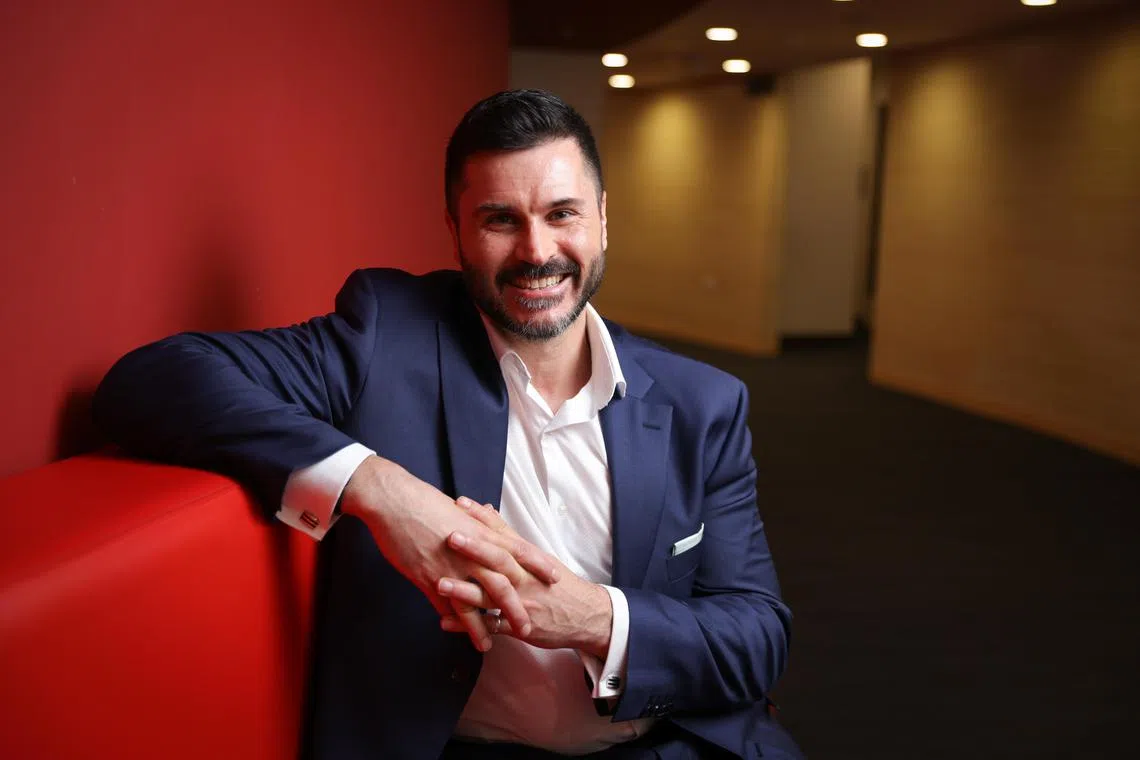Facial scanning could be key to diagnosing rare diseases
Sign up now: Get ST's newsletters delivered to your inbox

Cliniface, a 3D facial analysis software, can help identify markers that humans may not be able to spot, said KKH genetics service senior consultant, Dr Saumya Jamuar (above).
ST PHOTO: EUGENE TAN
Follow topic:
SINGAPORE - The human face could hold the secret to diagnosing an array of rare diseases.
Curtin University in Western Australia and local healthcare cluster SingHealth are collaborating on the use of Cliniface, a 3D facial analysis software developed by Curtin researchers.
The open-source platform uses images captured by commercially available 3D cameras to compare more than 50 different facial measurements and detect traits related to rare diseases.
Cliniface is currently being employed here as part of a study that aims to analyse the facial features associated with hereditary angioedema (HAE), a genetic disorder that causes severe, episodic swelling of the face and upper torso.
HAE affects one in 50,000 people worldwide, and symptoms typically begin to show by the age of 15. The swelling caused by the disorder can be unpredictable, but usually resolves in a matter of days. However, swelling in the airways can prove to be fatal.
Patients may have to take medication regularly in order to lead normal lives, said Dr Tan Sze-Chin, a rheumatology, allergy and immunology senior consultant at Tan Tock Seng Hospital.
There are an estimated 21 people in Singapore with HAE, with four reported deaths related to the disorder, he said in a March episode of The Straits Times’ Health Check podcast.
KK Women’s and Children’s Hospital (KKH), which is under SingHealth, will be adopting the technology to provide more targeted therapy to children diagnosed with HAE.
About a third of all rare genetic diseases have characteristics that show up on the face, said Curtin University research associate Richard Palmer, the lead software developer for Cliniface.
Though there are other facial analysis applications that use normal two-dimensional photography to scan for disorders, 3D photographs provide greater precision, he added. Issues such as perspective distortion may affect the accuracy of photos taken with traditional cameras.
The platform can help identify markers that humans may not be able to spot, said KKH genetics service senior consultant, Dr Saumya Jamuar.
While the technology is not meant to replace doctors, who are still needed to prevent the risk of misdiagnosis, it can act as a triaging tool to better assess what diseases a patient is facing, he added.
Noting how most of the data Cliniface has is linked to Caucasian faces, the collaboration with Curtin would help provide references for what “normal” Asian faces would look like, compared with those with disorders.
Dr Palmer and Dr Jamuar presented their research during a symposium at the Precision Public Health Asia 2023 Conference, held at the Centre for Healthcare Innovation in Singapore in July.

About a third of all rare genetic diseases have characteristics which show up on the face, said Curtin University research associate Dr Richard Palmer, the lead software developer for Cliniface.
ST PHOTO: ONG WEE JIN
The research, which began last year and is funded by Japanese pharmaceutical giant Takeda, aims to study the faces of 900 children of different ethnicities below age 18 here.
It has recruited about 750 participants so far, fewer than 2 per cent of whom have been found to have HAE.
The software has been used to detect other disorders, with Dr Jamuar noting that it picked up a blueish tint in the white of one child’s eye – a possible sign of brittle bone disease.
Another disease Cliniface has been used to scan for is foetal alcohol spectrum disorder – which occurs when alcohol in a mother’s blood passes to her baby during pregnancy – and is characterised by features such as drooping eyes and thin upper lips.
Foetal alcohol spectrum disorder can cause lifelong problems such as learning disabilities, speech and language delays, as well as problems with the heart, kidneys and bones.
Dr Palmer hopes that in the near future, Cliniface can be more easily found in hospitals and available to patients as part of their screening process.
The difficulty of accurately diagnosing rare diseases means those with such conditions often face a “diagnostic odyssey” of up to eight years and multiple incorrect diagnoses, said Dr Jamuar.
“But once we know what’s the underlying basis of (the disease), then we can treat it in a more precise way because we know exactly what we want to treat,” he added.

